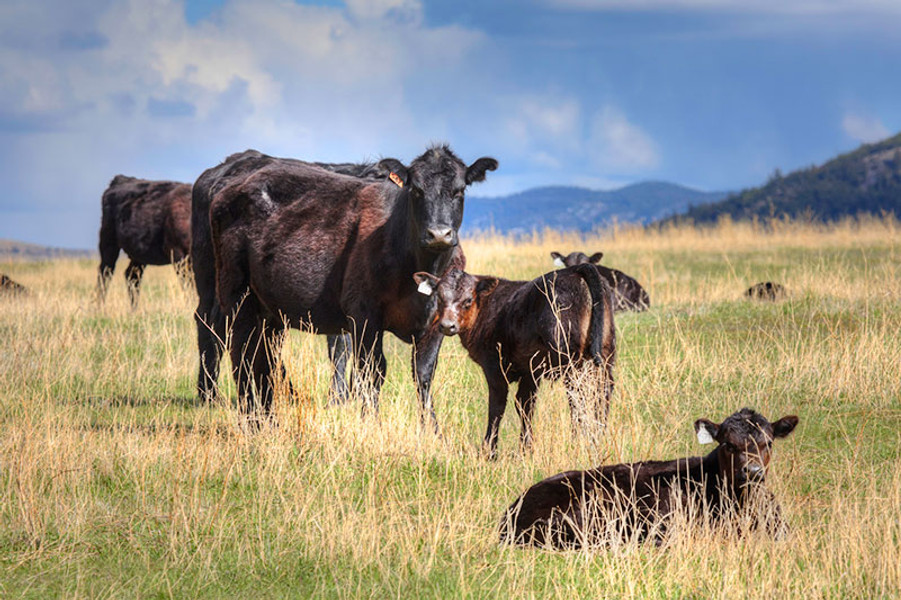Grass-Fed Beef: Better for You and the Planet
Posted by Montana Ranch and Cattle on Jul 16, 2024
The Benefits of Grass-Fed Beef: A Detailed Examination
Grass-fed beef has garnered significant attention in recent years, with many health-conscious consumers turning to this option for its purported benefits. While grass-fed beef refers to cattle that have been raised primarily on a diet of grass and other forage, as opposed to grain-fed beef, which comes from cattle that are fed a diet high in grains. The differences in diet can lead to variations in the nutritional profile, taste, and environmental impact of the beef. Here we will delve into the multiple dimensions of why grass-fed beef is considered beneficial, from nutritional advantages to environmental impacts and animal welfare.
Nutritional Benefits
One of the primary reasons people opt for grass-fed beef is its superior nutritional profile compared to grain-fed beef.
Higher Levels of Omega-3 Fatty Acids
Grass-fed beef typically contains higher levels of omega-3 fatty acids. These essential fats are known for their anti-inflammatory properties and are crucial for heart health, brain function, and overall well-being. Studies have shown that the omega-3 content in grass-fed beef can be up to five times higher than that in grain-fed beef.
Improved Omega-6 to Omega-3 Ratio
The modern diet often has an imbalanced omega-6 to omega-3 ratio, which can promote inflammation and contribute to chronic diseases. Grass-fed beef offers a more favorable omega-6 to omega-3 ratio, helping to restore balance and support better health outcomes.
Rich in Conjugated Linoleic Acid (CLA)
Conjugated Linoleic Acid (CLA) is a type of fat found in higher concentrations in grass-fed beef. CLA has been linked to various health benefits, including improved immune function, reduced inflammation, and potential anti-cancer properties.
Higher Levels of Antioxidants and Vitamins
Grass-fed beef is also richer in antioxidants like Vitamin E and beta-carotene, as well as other essential vitamins such as B vitamins and Vitamin K2. These nutrients play critical roles in maintaining good health, from supporting immune function to promoting healthy skin and bones.
Environmental Benefits
The method of raising grass-fed cattle can have significant positive impacts on the environment.
Sustainable Farming Practices
Grass-fed cattle are often raised on pasture-based systems that promote sustainable farming practices. These practices include rotational grazing, which helps maintain soil health, reduces erosion, and promotes biodiversity.
Reduced Greenhouse Gas Emissions
Grass-fed cattle tend to produce less methane, a potent greenhouse gas, compared to grain-fed cattle. Additionally, well-managed grazing systems can enhance soil carbon sequestration, further mitigating the effects of climate change.
Lower Antibiotic and Hormone Use
Grass-fed cattle are typically not given growth hormones or antibiotics, which are commonly used in conventional grain-fed operations to promote rapid growth and prevent disease. This not only benefits animal welfare but also reduces the risk of antibiotic resistance, a significant public health concern.
Animal Welfare
The welfare of animals is a significant consideration for many consumers when choosing grass-fed beef.
Natural Diet and Living Conditions
Grass-fed cattle are allowed to graze on pastures, which is their natural diet and environment. This contrasts with grain-fed cattle, which are often confined to feedlots and fed a diet high in grains. Pasture-based systems allow cattle to exhibit natural behaviors, promoting better overall health and well-being.
Reduced Stress and Disease
The stress levels and incidence of disease are typically lower in grass-fed cattle. Access to open pastures and a natural diet reduces the need for medical interventions and contributes to the overall quality of life for the animals.
Culinary Benefits
Beyond health and environmental advantages, grass-fed beef also offers culinary benefits that appeal to many chefs and food enthusiasts.
Enhanced Flavor Profile
Grass-fed beef is often praised for its distinctive flavor, which is described as more robust and earthy compared to grain-fed beef. This unique taste is attributed to the cattle's natural diet and the variety of plants they consume.
Leaner Meat
Grass-fed beef is generally leaner than grain-fed beef, with less overall fat content. This can be beneficial for those looking to reduce their fat intake while still enjoying the taste and nutritional benefits of beef.
Conclusion
Grass-fed beef stands out as a nutritionally superior, environmentally sustainable, and ethically preferable choice for many consumers. Its higher levels of omega-3 fatty acids, CLA, vitamins, and antioxidants make it a healthier option. The environmentally friendly farming practices and better animal welfare standards further enhance its appeal. Lastly, the unique flavor and leaner composition make it a favorite among culinary enthusiasts. As awareness of these benefits continues to grow, grass-fed beef is likely to become an increasingly popular choice for health-conscious and environmentally aware consumers.

